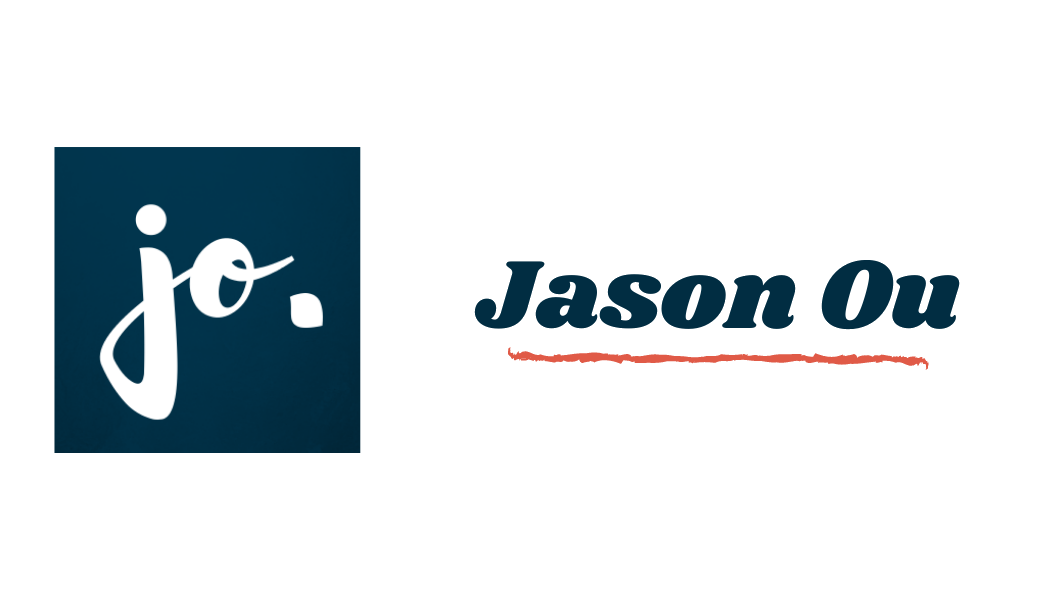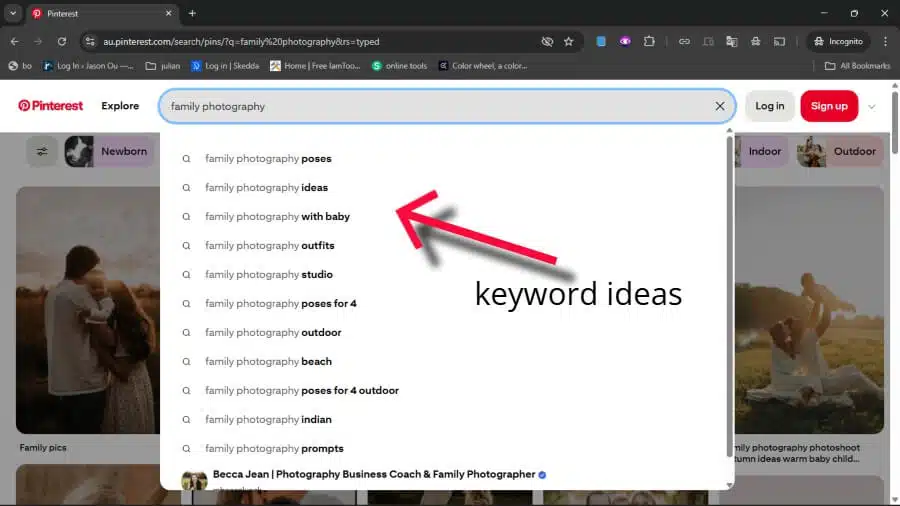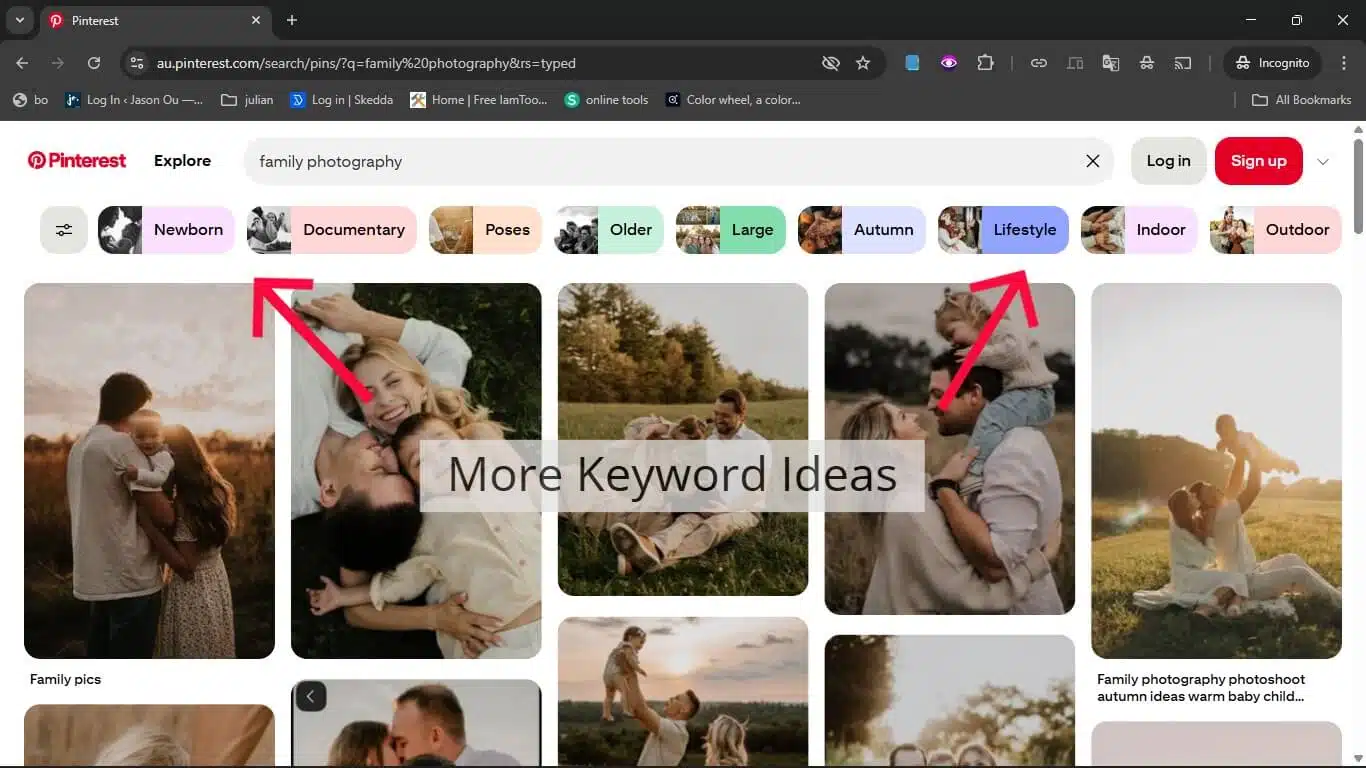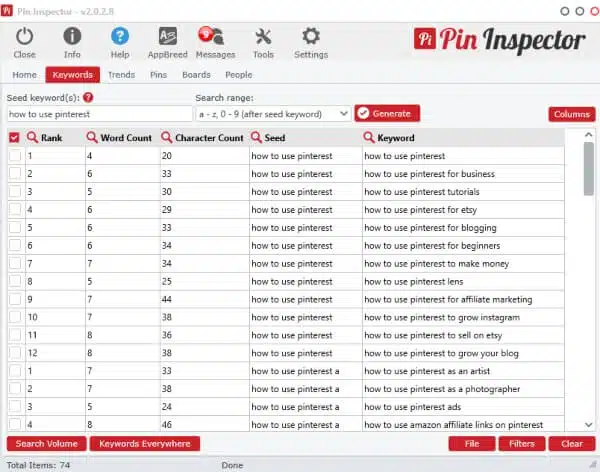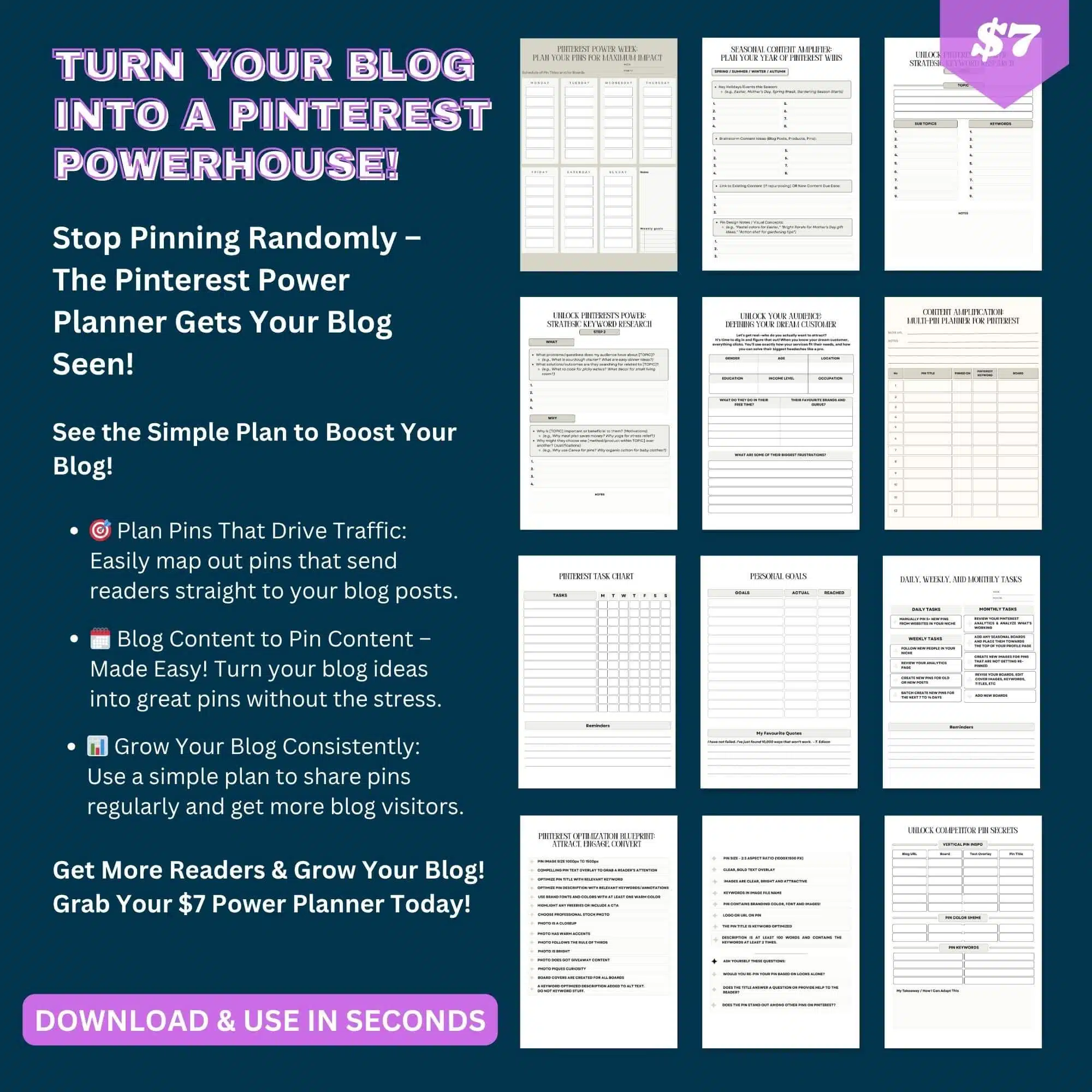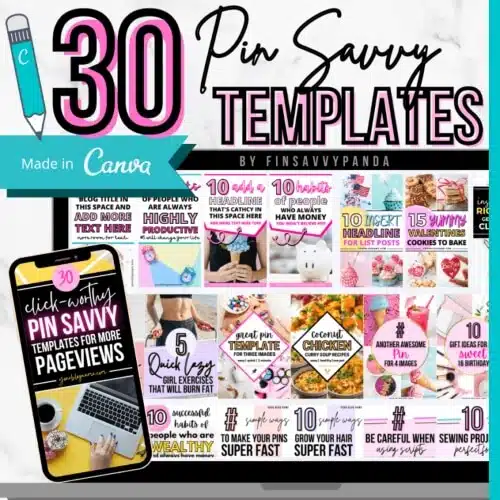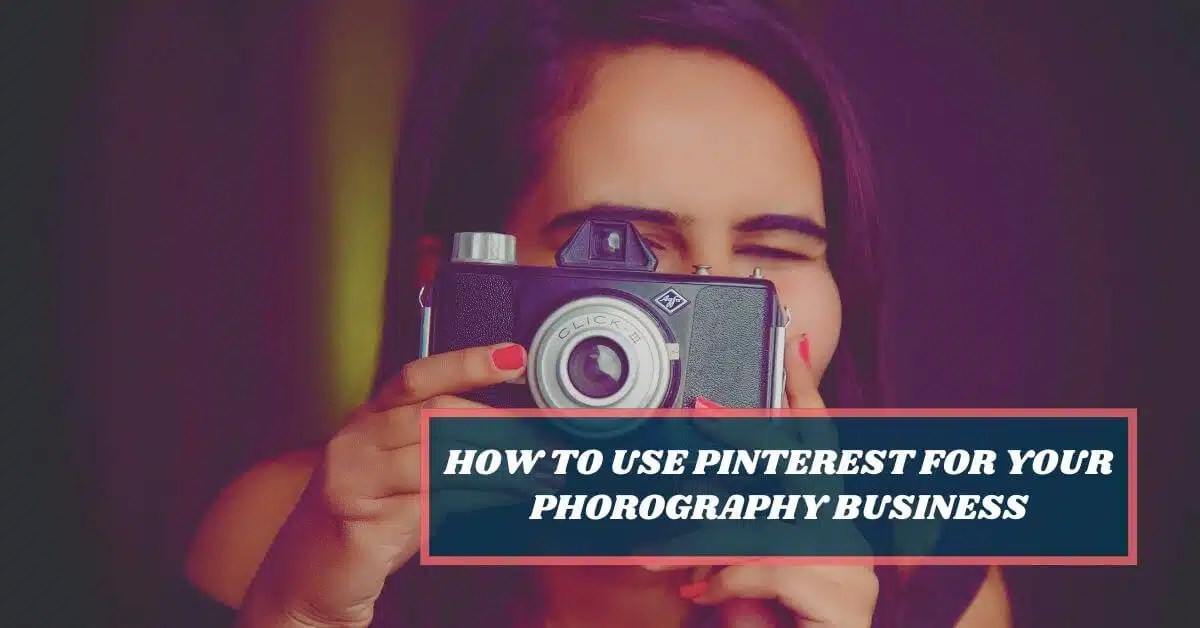Key Takeaways
- Pinterest can drive significant website traffic and generate new business opportunities for photographers.
- Success on Pinterest comes from strategic planning rather than random posting.
- Pinterest is a visual search engine where potential clients actively seek photography inspiration.
Save/Pin the image below👇because I often update my posts. So stay informed with this blog “How to Use Pinterest for Blogging” and save it.
Pinterest For Photographers
Pinterest works differently than other platforms you might use. It functions as a search engine instead of a social platform.
Think of Pinterest like Google, but filled with photos. This makes it perfect for photographers who want to showcase their work.
With over 450 million people using Pinterest each month, you have access to a huge audience. These users actively search for ideas and inspiration.
They want to find what they need, and Pinterest helps them do that.
Pinterest Brings People to Your Website Unlike Other Platforms
Most social platforms want to keep users scrolling on their site.
They make money when people stay engaged with their content.
Pinterest does the opposite. It encourages users to click through to external websites.
This makes it a powerful tool for driving traffic to your photography business.
Many photographers see much higher reach on Pinterest compared to Instagram or Facebook.
You might get a few thousand views on Instagram but tens of thousands on Pinterest.
Key differences:
| Platform Type | Purpose | Traffic Results |
|---|---|---|
| Social Media | Keep users engaged | Limited website visits |
| Help users find solutions | High click-through rates |
Use social platforms to build your brand.
Use Pinterest to bring potential clients to your website where they can book your services or view your full portfolio.
6 Key Pinterest Marketing Strategies
Let’s look at how to use Pinterest for your photography business.
1. Set Up Your Business Profile
Create a business account as the foundation of your Pinterest strategy.
Whether you already have a personal Pinterest account or need to start fresh, switching to a business profile unlocks essential tools for your photography business.
A business account gives you access to detailed analytics that show how your content performs.
You can track which pins get the most views, saves, and clicks.
This data helps you understand what your audience wants to see.
The business account is free to set up and offers professional features like rich pins, shopping features, and advertising options.
These tools help potential clients find your work more easily.
And to have access to these tools, you’ll need to claim your website on Pinterest .
2. Optimize Content with Strategic Keywords
Pinterest acts as a visual search engine, so keywords play a big role in getting your photography discovered.
Strategic keyword placement helps Pinterest show your content to the right people.
Understanding Search Terms
Keywords are the exact words and phrases people type when looking for photography inspiration or services.
Your potential clients search for terms like “rustic wedding photographer” or “newborn photography boy with family”
Include these search terms throughout your Pinterest presence:
- Profile name and bio (Here’s A Complete Guide on How to Optimize Pinterest Profile)
- Board titles and descriptions
- Pin titles and descriptions
- Image file names
Finding the right keywords takes some research but doesn’t need expensive tools.
Use Pinterest’s search bar to discover popular terms.
Start typing words related to your photography niche and watch the suggestions that appear.
These suggestions show what people actually search for.
For example, typing “portrait photography” might show suggestions like “family photography poses,” “family photography ideas,” or “family photography with baby”
Each suggestion gives you a keyword opportunity.
Image 1: How to use Pinterest keyword search tool for photography.
Image 2: How to use Pinterest search tool with the bubble keywords .
A Complete Guide on How to Use Pinterest Keywords
Finding the Right Keywords Made Simple
Sure, Pinterest has other keyword tools buried in their ads section, but who has time to dig through all that confusion?
Smart photographers skip the headache and use tools that actually work.
The Pinterest search bar gives you free keyword ideas instantly.
For deeper insights, try Pin Inspector to uncover the keywords your competitors don’t want you to find.
Pin Inspector acts like a secret weapon for Pinterest keywords.
At $67, it pays for itself quickly, and you can save $20 when you click here.
This tool reveals exactly what people search for and shows you which keywords actually get results.
Don’t worry if it looks overwhelming at first – you’ll master it faster than you think.
Image 3: A Screenshot example of Pin Inspector dashboard interface.
3. Build Focused Board Collections
Pinterest boards organize your content into categories that help users find exactly what they need.
Creating targeted boards with clear purposes boosts your visibility and keeps visitors engaged.
Your board names should clearly describe what people will find inside.
Instead of vague titles like “Pretty Photos,” use specific names like “Golden Hour Wedding Photography” or “Urban Family Portrait Ideas.”
Each board needs a detailed description with relevant keywords.
Write descriptions that explain what visitors will discover and include terms they might search for.
A good description might be:
“Creative indoor newborn photography ideas featuring natural light setups, cozy props, and intimate family moments.“
Consider creating boards that serve different purposes:
| Board Type | Purpose | Example |
|---|---|---|
| Portfolio Boards | Showcase your best work | “Elegant Wedding Photography” |
| Inspiration Boards | Share ideas for clients | “Outdoor Engagement Photo Ideas” |
| Behind-the-Scenes | Show your process | “Photography Setup Tips” |
| Educational Content | Teach photography skills | “Natural Light Photography Techniques” |
4. Focus on Excellence Over Volume
Posting high-quality content consistently beats flooding Pinterest with lots of average pins.
Quality content gets more engagement, saves, and clicks.
Each pin should offer real value to your audience.
Share your best photography work, helpful tips, or genuine inspiration instead of posting just to stay active.
Users notice when content lacks thought or purpose.
Pinterest rewards accounts that share valuable content regularly.
The algorithm favors pins that get engagement.
Focus your energy on creating pins people want to save and share.
Plan your content around what your ideal clients need.
Wedding photographers might share ceremony timeline tips or venue inspiration.
Portrait photographers could focus on posing guides, outfit suggestions, or location ideas.
Your pins should solve problems or provide inspiration for your target audience.
When someone saves your pin, they should feel like they gained something useful or beautiful for their own project.
5. Building Your Pinterest Pins
Creating pins is an exciting step in your Pinterest journey as a photographer.
Each pin needs strategic keyword placement in titles, descriptions, and image file names to maximize visibility.
Click the Create button and select Create Pin to start.
The pin creation interface walks you through six key steps that help your content perform better on Pinterest.
1. Upload Your Pin Image
Design your pins using tools like Photoshop or Canva. Mix different photos, text overlays, and design elements to add variety to your pins.
Save your pin graphics as JPG files with keyword-rich names.
For example, use “rustic-wedding-photogaphy.jpg” instead of a generic file name.
Create multiple pin designs for the same content. Different visual styles help you reach various audience segments and see which designs work best.
Key Image Requirements:
- High-quality resolution
- Vertical orientation (2:3 ratio works best)
- Clear, readable text if included
- Brand elements for recognition
2. Add Your Pin Title
Write titles that use relevant keywords and stay engaging and descriptive.
Your pin title doesn’t have to match your blog post or portfolio page exactly, but it should accurately represent the content.
Think about what potential clients might search for when looking for photography services.
Include location names, photography styles, or specific niches in your titles when it makes sense.
Keep titles under 100 characters so they display properly across devices.
3. Choose The Board For Your Pin
Select the best board for your pin’s topic and content.
Think about which board your target audience would browse when searching for similar ideas.
Some pins fit multiple boards.
Create different pin designs for the same content and share them across relevant boards to expand your reach.
Wait a few days between pinning the same content to different boards to keep your posting pattern natural.
4. Provide A Pin Description
Write detailed descriptions that use relevant keywords naturally.
Pinterest uses these descriptions to match your content with user searches.
Include 2-3 sentences describing what viewers will find when they click through to your website.
Mention your photography style, location, or specialties if they fit.
Effective Description Elements:
- Primary keywords in the first sentence
- Call-to-action phrases
- Location information if relevant
- Photography style or niche details
5. Add The Destination Link/URL
Always add a direct URL that takes users to related content on your website.
Link to specific portfolio pages, blog posts, or service info instead of just your homepage.
Test your links before publishing to make sure they work.
Broken links frustrate users and hurt your Pinterest performance.
Choose URLs that provide value to visitors.
Landing pages should offer the information or images your pin promises.
6. Schedule Your Pin
Publish pins when your target audience is most active.
Evening hours usually see higher engagement, but check your Pinterest analytics to find your audience’s patterns.
Schedule pins ahead of time to keep posting consistent without daily manual work.
Spread your pins throughout the week instead of posting many at once.
Use Pinterest’s native scheduling feature or third-party tools to plan your calendar.
Consistent posting helps you stay visible in Pinterest’s algorithm.
Time your pins to match relevant seasons or events, like wedding season or holiday portrait sessions.
6. Track Your Success with Analytics
Numbers don’t lie. Both Pinterest Analytics and Google Analytics show you exactly what’s working and what isn’t.
Pinterest Analytics reveals which pins get the most saves, clicks, and impressions.
Check your top-performing pins monthly and create similar content.
Look for patterns in your best pins – similar colors, topics, or posting times. Rinse and repeat.
Google Analytics shows the real story.
Set up UTM parameters on your Pinterest links to track which pins actually bring clients to your website.
Check your referral traffic from Pinterest and see which pages visitors view most.
Key metrics to watch:
- Pinterest impressions and saves
- Website clicks from Pinterest
- Time spent on your site from Pinterest visitors
- Contact form submissions from Pinterest traffic
Don’t get lost in vanity metrics like follower counts. Focus on pins that drive website visits and client inquiries.
If a pin gets thousands of views but zero clicks, it’s not helping your business grow.
Real Quick
Pinterest is amazing for bloggers, but feeling a bit lost on how to plan all your pins to get those readers?
There’s an easy way to fix that!
Ways to Skip the Pinterest Daily Grind
Pinterest success needs consistent activity.
Smart planning helps you stay active without spending hours every day on the platform.
These two strategies will save you time while keeping your account growing.
Strategy 1: Create Multiple Graphics in Advance
Set aside time each month for pin creation. This batch approach saves time and keeps you organized.
Design Template Benefits:
- Swap images and text quickly
- Maintain consistent branding
- Speed up your workflow
- Create professional-looking pins
Tools for Pin Design:
- Canva – User-friendly templates and drag-and-drop features
- Photoshop – Advanced editing and custom graphics
- Adobe Express – Quick designs with brand consistency
Start by doing keyword research for your niche. This helps you create pins people actually search for.
Design 10-15 pins during your monthly session.
You can reuse the same blog post or product with different graphics and headlines.
Keep your brand colors and fonts consistent on all pins. This builds recognition and trust with your audience.
🎨 Need Help With Pinterest Graphics? Use Templates!
Making good-looking pins takes time.
Not all of us have hours to sit in Canva creating designs from scratch.
And coming up with new ideas for pins every week?
That gets tiring too.
💡 Here’s a Shortcut That Saves Hours:
Use Pinterest templates!
I use this Viral Pinterest Template bundle for Canva, which has saved me hours of headaches.
It’s perfect for busy bloggers who want to:
- Save time on design
- Create click-worthy pins faster
- Stay consistent without burnout
✅ Why These Templates Work:
- Made for bloggers by a blogger
- Fully customizable in free Canva
- Designs that actually get clicks
- Batch create pins in minutes, not hours
You just drag, drop, tweak the text ... and boom! Done.
👉 Grab your viral Pinterest templates here and start creating pins the easy way!
Strategy 2: Use Automated Pin Scheduling
Scheduling tools help you post regularly without logging in every day.
You can plan your pins weeks or even months in advance.
Pinterest’s Built-in Scheduler:
- Cost: Free
- Scheduling: Schedule up to 2 weeks ahead
- Analytics: See basic pin performance
- Best for: Small accounts or beginners
Third-Party Scheduling Tools:
| Feature | Pinterest Scheduler | External Tools |
|---|---|---|
| Cost | Free | Monthly fee |
| Schedule Length | 2 weeks | Unlimited |
| Analytics | Basic | Detailed |
| Bulk Upload | Limited | Yes |
External scheduling tools give you more features.
You can upload many pins at once and set them up to post months ahead.
They also show you detailed analytics to track which pins bring the most traffic.
The best scheduling tool I recommend and use in Tailwind.
This is a nifty Pinterest scheduler that allows you to plan and schedule your pins in advance.
Scheduling Best Practices:
- Pin 3-5 times a day
- Leave 2-4 hours between each pin
- Share a mix of your content and others’ pins
- Pin to several relevant boards
Post during peak hours when your audience is online.
Most scheduling tools suggest the best times to post based on your followers’ activity.
Set up your pins once a month so your account stays active while you work on other things.
10 Top Pinterest Tools to Skyrocket Your Traffic
15 Pinterest Marketing Tips for Bloggers
How to use Pinterest for Photographers : The Wrap
By the way👋, if you need help with help to start a blog on Pinterest, you can reach out to me here.
Disclosure: This post may contain affiliate links, which means I’ll receive a commission if you purchase through my links, at no extra cost to you. Please read full disclosure for more information.
You Might Want to Check This Out Too
Resources To Grow Your Business With
Pinteresting
Struggling to get traffic from Pinterest? Pinteresting Strategies 2025 by Carly Campbell reveals a manual pinning method that works—even with algorithm changes.
This course walks you through step-by-step strategies to pin effectively, increase engagement, and grow your blog without relying on expensive schedulers.
Carly has used this exact system to bring in 100,000+ page views in just months, and now she’s sharing it with you.
Stop guessing and start seeing real results today!
Bluehost
Bluehost is a great starting point for beginners or bloggers who want to switch to a reliable web hosting service. And it gives you the best bang for your buck - starting at $2.95 a month*.
With the entry-level hosting plan, you'll get a high up-time, reliable customer support, FREE domain name (first year) and 30 day money back guarantee.
You can sign up with Bluehost here.
WPX Hosting
It's a web-hosting service I love using. It specializes in WordPress hosting, and depending on what package you opt for, you can host 5 or more sites on one account. The best bit is - the quick turnaround in support is top notch.
For bloggers who have an established blog, this is a fantastic option.
You can learn more about this service here.
Aweber
Building an email list of a growing audience is essential for the longevity of any business. This autoresponder service is easy to use, and it is a great starting point for someone looking to kickstart their email campaign.
Hi, I’m Jason Ou (surname aka, Oh). I am a Solopreneur and Blogger. My mission is to help fellow entrepreneurs (like you) to profit from their passion online. Let’s connect on Facebook now.
